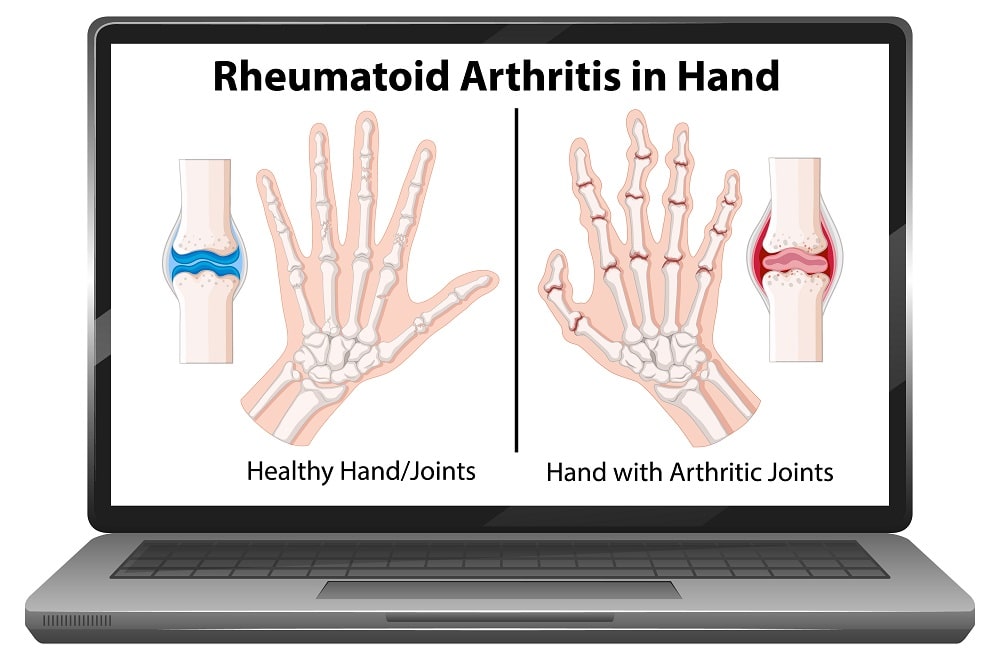Having pain in your knuckles can be an extremely disruptive and uncomfortable experience. Knuckle pain can range from mild to severe, but it’s important to recognize the underlying causes of this discomfort and know when you should seek medical attention. This article will explain what the knuckles are, common causes of knuckle pain, how to recognize symptoms, diagnosis methods for medical evaluation, and helpful tips for managing and preventing pain. We’ll also discuss natural remedies and when seeking medical attention is important.
Anatomy of the Knuckles
The knuckles are the joints at the end of each finger, where they connect with the hand bones. The knuckles are comprised of three main parts:
- The head is the rounded part you can feel when you press on them.
- The shaft is the part that runs along each finger.
- The base where it connects to the hand bones.
knuckles are vulnerable to injury because of their limited mobility and exposure to friction or pressure.
Read More: Ear Cartilage Pain: What Causes It, How to Treat It?
Common Causes of Knuckle Pain
Knuckle pain can cause by various factors, including injury or trauma, arthritis, overuse, and inflammation. Let’s take a closer look at each of these scenarios.
1) Injury and Trauma
Trauma to the knuckles can occur from sports injuries, falls, punches, or any direct impact. The skin may break, and bruising is often visible. In some cases, fractures or dislocations may also occur.
2) Arthritis
Arthritis, or the inflammation of a joint, is one of the most common causes of knuckle pain. The two main types of arthritis that can affect the knuckles are rheumatoid arthritis and osteoarthritis. Rheumatoid arthritis affects the lining of the joints and is an autoimmune disorder. Osteoarthritis is caused by the breakdown of cartilage, which leads to pain and stiffness.

Read More: Navicular Bone Pain: What Causes It, How to Relief Pain?
3) Overuse
Frequent use or overuse of the knuckles can lead to chronic pain and inflammation. This type of pain is often called repetitive strain injury (RSI). Examples include activities such as typing, writing, or playing a musical instrument.
4) Inflammation
Inflammation of the knuckles can cause by gout, bursitis, or infection. Gout is a type of arthritis caused by the buildup of uric acid in the joints. Bursitis is an inflammation of the bursa, a fluid-filled sac that cushions and lubricates the joints. Infection can also occur due to a break in the skin or an infected open wound.
Recognizing the Symptoms
It’s important to know the signs and symptoms associated with knuckle pain, so you can seek proper treatment if needed. Common symptoms include:
Pain and Discomfort
Pain is the most common symptom of knuckle pain, and it can range from mild to severe, depending on the underlying cause. Discomfort may also occur when moving or applying pressure to the affected area.
Swelling and Redness
Swelling and redness are often associated with inflammation or infection. If these symptoms are accompanied by fever or increased warmth near the knuckles, seek medical attention immediately, as it may be a sign of infection.
Stiffness and Limited Mobility
Stiffness and limited mobility are common in cases of arthritis or overuse. Pain may also worsen if you attempt to move the affected knuckle or area.

Read More: Yeast Infection While on Period: What Causes It, How to Treat It?
Diagnosis and Medical Evaluation
If your knuckle pain persists for over a few days or worsens, it’s important to seek medical evaluation. To diagnose the cause of your pain, your doctor may conduct a physical examination and order imaging tests or laboratory tests.
Physical Examination
Your doctor will inspect the affected area, feeling for swelling and tenderness, and assess a range of motion and strength.
Imaging Tests
Imaging tests such as X-rays, CT scans, or MRIs may be ordered to get a better look at the affected area and rule out fractures or other injuries.
Laboratory Tests
Your doctor may also order laboratory tests such as blood work or joint fluid analysis to diagnose any underlying conditions or infections.
Read More: Groin Pain When Walking: What Causes It, How to Treat It?
Managing Knuckle Pain
If you experience knuckle pain, there are a few methods you can try to manage and reduce the discomfort. Some of these include rest and immobilization, cold and heat therapy, medications, and physical therapy.
1) Rest and Immobilization
If your knuckles are swollen or painful due to injury or overuse, it’s important to rest and avoid activities that may worsen the condition. Your doctor may also recommend wearing a splint or brace to help immobilize the affected area.
2) Cold and Heat Therapy
Applying cold or heat therapy can help manage pain and reduce swelling. Ice packs can reduce inflammation, while warm compresses can help relax the muscles and reduce stiffness.
3) Medications
Your doctor may recommend over-the-counter or prescription medications such as ibuprofen, naproxen, or corticosteroids to help reduce pain and inflammation.
4) Physical Therapy
If your knuckle pain is caused by arthritis or other chronic conditions, physical therapy may be recommended to help improve your range of motion and strength. Your therapist may also provide exercises to help reduce pain and stiffness.

Read More: Nerve Pain in Shoulder: What Causes It, How to Treat It?
Preventing Knuckle Pain
1. Proper Hand Posture
One of the best ways to prevent knuckle pain is to maintain proper hand posture. It’s important to keep your wrists neutral and avoid repetitive activities that strain the joints.
2. Wear Protective Gear
If you play contact sports or engage in any activity with potential injury, wearing protective gear such as gloves or wrist guards is important. This will help to reduce the risk of trauma to the knuckles.
3. Avoid Repetitive Activities
If your job involves frequent or repetitive activities, take frequent breaks and use ergonomic accessories such as a split keyboard or adjustable chair to help minimize strain on the joints.
4. Exercise Regularly
Regular exercise can help to strengthen the muscles and tendons around the knuckles, which can help to prevent pain. Low-impact exercises like walking or swimming are great options for managing and preventing knuckle pain.
5. Eat a Healthy Diet
Eating a healthy, balanced diet rich in essential vitamins and minerals can help reduce inflammation throughout the body. Foods such as leafy greens, fish, nuts, and seeds are great sources of these nutrients.
Read More: Can a Sinus Infection Make You Dizzy? A Complete Guideness
Natural Remedies for Knuckles Pain Relief
In addition to conventional treatments, a few natural remedies can help manage knuckle pain. Some of these include:
- Massage therapy: Massaging the affected area can help to reduce pain and swelling.
- Acupuncture: This traditional Chinese medicine therapy involves inserting tiny needles into specific points on the skin to stimulate energy flow and relieve chronic pain.
- Lifestyle changes: Eating a healthy diet, getting plenty of rest, and avoiding activities that may worsen symptoms can all help with knuckle pain management.
- Herbal remedies: Certain herbs such as willow bark, devil’s claw, and turmeric may help to reduce inflammation and manage pain.
When To See a Doctor
It’s important to seek medical evaluation if your knuckle pain persists over a few days or worsens. It’s also important to see a doctor if you experience fever, increased warmth near the affected area, or any other signs of infection.
Conclusion
In conclusion, knuckle pain can have a variety of causes ranging from injury to infection. Depending on the cause, treatments may include rest and immobilization, cold and heat therapy, medications, or physical therapy. Additionally, lifestyle changes such as maintaining proper posture and avoiding repetitive activities can help to reduce the likelihood of developing knuckle pain. Lastly, if your knuckle pain persists or worsens, it’s important towhat causes pain in knuckles seek medical evaluation. With the right treatment plan and preventative measures, you can manage your knuckle pain and improve your overall quality of life.
Read More: Can a Yeast Infection Cause a UTI? How to Treat It
FAQs
Yes, stress and emotional factors can contribute to knuckle pain. Chronic stress can lead to muscle tension, which can cause joint pain. Additionally, depression or anxiety may lead to a lack of exercise, which can cause the muscles around the joints to become weak and less flexible. ‘
Yes, making dietary changes can help reduce knuckle pain. Eating a healthy diet rich in essential vitamins and minerals can help reduce inflammation throughout the body. Additionally, avoiding processed foods and foods high in sugar and fat can help manage joint pain.
Yes, carpal tunnel syndrome can cause pain in the knuckles. The carpal tunnel is caused by pressure on the median nerve at the wrist, which can cause pain and tingling in the fingers and hands. Other symptoms of carpal tunnel, such as weakness or loss of grip, may also be felt in the knuckles.

